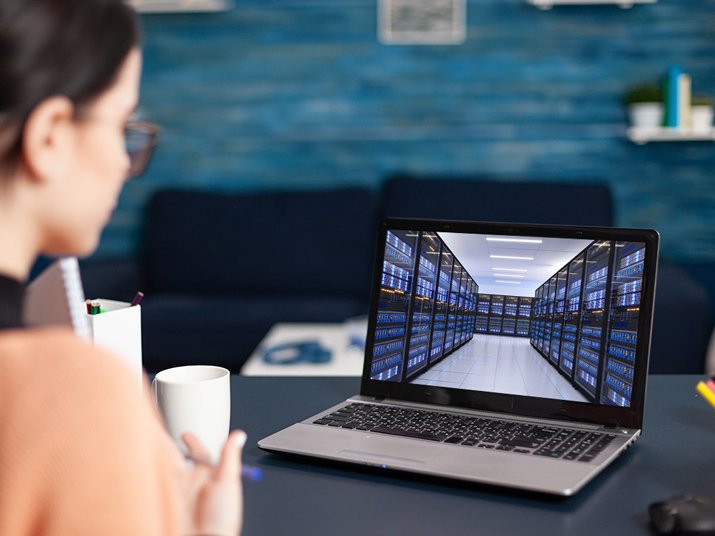Datacenter design and infrastructure have evolved to be more robust and futuristic than ever before. Consequently, cooling and power systems are also more advanced, demanding better monitoring solutions than traditional methods.
Most data centers are no longer located on-premises since it makes operations cheaper and provides more scalability and connectivity. Colocation centers or hybrid data centers, therefore, are steadily replacing the on-premise options.
Although colocation centers enable businesses with increased performance and reduced downtime, businesses need digital remote monitoring systems to embrace their innovations and keep in touch with the data center facilities.
This article focuses more on why remote monitoring is necessary for data centers and how they make data center designs future-proof and efficient.
What is Remote Monitoring?

A data center is an aggregated facility with components like power and cooling systems, IT equipment, redundancy components like backup generators and UPS units, etc., for IT personnel to operate in the facility.
Given the complexities of hardware equipment, these data centers need close monitoring to ensure optimum performance.
Closely monitoring every component may be possible for on-premises data centers. However, a remote monitoring system comes in handy for data centers located away from the office premises or with inadequate experts to take care of the day-to-day activities inside the data center.
A remote monitoring system allows experts and IT data center managers to oversee the facility with real-time data of the functioning of every component of the facility from anywhere in the world.
This helps data center owners to manage the facility by tracking crucial data points, monitoring the efficiency of cooling systems, and detecting any malfunctioning or any factor that could disrupt data flow and result in potential downtime.
These data points also give insights into the data center’s overall performance, indicating areas for improvement and optimization.
Although monitoring services were available a decade ago, remote monitoring is a recent advancement in data center design practice that has overcome several challenges faced by manual monitoring systems.
Remote Monitoring Trends in Data Center Design
Remote monitoring eliminates errors due to human interpretation and has opened new avenues to implement advancements like cloud computing, mobile computing, machine learning, and automation.
This enhances security and optimizes cost in several aspects of the data center. Here are some trends that remote monitoring uses to enhance data center design:
Integrated systems
Units like chillers, UPS, PDUs, and cooling units have embedded systems that control the device. These embedded systems give out alarms and notifications based on the data from a combination of sensors, features, programmed algorithms, and programmed sample rates.
This data is used in remote monitoring to manage and control the operation of the device, which can significantly improve its performance and detect failures well in advance.
Cyber security
Remote monitoring enhances the cyber security of the data center and the physical infrastructure through various measures like security cameras, sensors, and more.
The remote monitoring systems keep an eye on any breaches in security within the systems with security checkpoints and alert the necessary personnel when it detects insecurity.
Cloud computing
Cloud computing makes remote monitoring possible. Scalable cloud platforms enable data storage and hosting with predictive analytics and machine learning tools, which enhance remote monitoring with real-time data and insights.
Machine Learning (ML)
Machine learning uses results from previous learnings to predict future risks and events in data centers. Using ML in remote monitoring can improve risk analysis. It can also make timely preventive actions without potential downtime or significant damage to the data center design possible.
Automation of systems
Automation systems integrated for power and cooling efficiencies and repetitive processes reduce potential errors and inaccuracies in predicting current conditions and future risks. This increases data center performance and allows manual labor to focus on core, innovative tasks.
Benefits of Remote Monitoring
Remote monitoring has various benefits for data center design and makes them competitive in the market in many ways. Some of the benefits of remote monitoring are:
Reduces downtime
Advanced network operating (for remote monitoring systems) enables remote troubleshooting and rectifies issues before the downfall of systems. Remote monitoring software also has contacts of experts ready to call in case of a risk or an attack.
Moreover, the status of every component is visible on remote monitoring platforms making predictions and repairs more straightforward and faster.
Reduced manual intervention
Remote monitoring facilitates reduced overhead operation where manual labor is not necessary. In addition, remote monitoring allows managers and experts to control and manage systems through mobile applications eliminating the need for IT personnel to be physically present on the premises to access the data center.
Better energy efficiency
Remote monitoring gives better access to a data center’s chillers, power units, and cooling units. In addition, by using the data points, remote monitoring systems allow experts and data center managers to regulate the operation of individual components to make systems more efficient and sustainable.
It can also give engineers and data center design experts insights into the cooling strategy’s performance to make improvisations to optimize cooling and power efficiencies.
Scalability
As the data center scales and more units are added to the ecosystem, remote monitoring systems can adopt horizontal scaling models to accommodate the computing nodes.
This makes monitoring more accessible, especially for large data centers with hundreds and thousands of IT units and their associated units for redundancy and cooling.
Enhanced operations and maintenance
Remote monitoring makes everyday operations and maintenance more accessible and informative with real-time data and an advanced overview of systems.
This can also reduce costs for the operation and maintenance of data centers by eliminating unwanted expenditure or risk-based approaches for the same.
Key Takeaways
Remote monitoring increases the value of data centers and makes them competitive in the market. In addition, data center design experts can significantly benefit from remote monitoring systems to gain comprehensive insights into the data center performance and estimate risk predictions based on the data.
Mechartes data center design experts have used their expertise to make data centers more sustainable and reliable by implementing complex data to optimize conditions in the data center. Find out more about our validation services at Mechartes and remote monitoring for data centers here.


 Share
Share  facebook
facebook